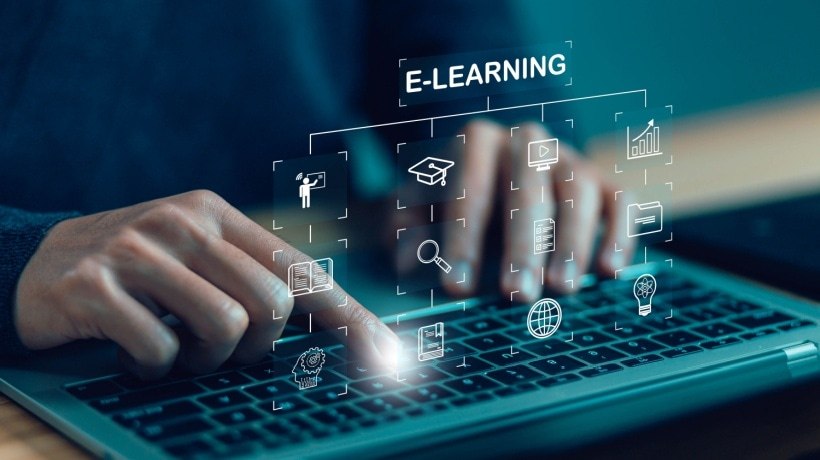#microlearning
#microlearning
[ follow ]
#instructional-design #mobile-learning #corporate-training #gamification #workplace-training #elearning
fromeLearning Industry
3 days agoWhy Custom eLearning Solutions Outperform Off-The-Shelf Courses
In today's fast-evolving learning environment, organizations must deliver training that is relevant, engaging, and aligned with their goals. While off-the-shelf courses offer convenience and speed, they often fail to meet specific learning needs. Custom eLearning solutions, on the other hand, allow organizations to tailor content, design, and delivery methods to fit their unique culture, skills gaps, and performance goals. This article explores how custom eLearning outperforms prebuilt alternatives, focusing on the eLearning design process, microlearning modules, and the role of eLearning content providers.
Online learning
Higher education
fromInside Higher Ed | Higher Education News, Events and Jobs
1 week agoA Microcourse for Sophomore Student Success
Short online microlearning modules improved rising sophomores' time management, money management, and career skills to support second-year retention and timely degree progress.
fromeLearning Industry
1 week agoMicrolearning: A Must-Have In Hybrid Work
In a series of articles, we'll explore how these methods have evolved beyond novelty and are now shaping the way people actually learn on the job. From microlearning in hybrid work, to gamification that drives application, to embedding learning into the flow of work, and finally balancing campaigns with journeys for lasting impact, we'll look at how L&D teams can design learning that fits seamlessly into daily routines and business priorities.
Online learning
fromeLearning Industry
2 weeks ago5 Learning Methodologies That Drive Continuous Professional Development
Given the rapid pace of business today, skill maintenance is no longer optional; it's essential for competitiveness. The World Economic Forum's 2025 Future of Jobs report examines how businesses predict the labor market will change over the next five years, ending in 2030. Organizations are in a dilemma as they must decide whether continuous professional development for their employees will be merely a training program or a strategic advantage.
Online learning
fromeLearning Industry
3 weeks agoThe Power Duo: Personalized Learning And Microlearning For Modern Workplaces
Imagine this. You're in the middle of your workday, juggling deadlines, meetings, and emails. Suddenly, a notification pops up: "Complete your 45-minute soft skills training." Chances are, you sigh and push it aside for "later." And "later" never really comes. This is the reality in most workplaces today. Employees are swamped, attention spans are shorter, and traditional training feels like a chore rather than a learning opportunity.
Online learning
fromeLearning Industry
3 weeks agoThe Rise Of Learning Co-Pilots: AI Agents That Level Up Every Employee
Imagine an always-on learning partner that knows what you don't, nudges you at just the right moment, and turns busy work into bite-sized growth. That's the promise of learning co-pilots-intelligent AI agents embedded into daily workflows to guide, teach, and coach employees at scale. Not a replacement for instructors or mentors, these co-pilots augment human capability: they make learning contextual, timely, and measurable.
Artificial intelligence
fromeLearning Industry
4 weeks ago5 Proven Benefits Of Microlearning For Employee Training
Microlearning is an approach to employee training that's gaining huge popularity for its efficiency, flexibility, and measurable results. Microlearning refers to bite-sized learning modules, usually between 3 to 10 minutes, designed to deliver specific knowledge or skills. These modules can be videos, quizzes, infographics, interactive simulations, or even short articles. Unlike traditional training sessions that can feel overwhelming, microlearning is easy to digest, accessible on demand, and often mobile-friendly.
Online learning
Education
fromeLearning Industry
1 month agoMicrolearning For Modern Learners In Higher Ed: Why Publishers Must Act Now
Microlearning delivers short, focused units that increase engagement and retention, align with modular micro-credential trends, and help higher education stay relevant to digital-first students.
fromATD
1 month agoUpdate Your Strategy for iGen Learners
Workers entering the workforce can't remember a time without access to the Internet and Google Search available at any time on their smartphone (sometimes called the "iGeneration," or "iGen" after Apple's popular naming convention), and they expect formal and informal training on the job will match the learning style they grew up with: tech-enabled and personalized self-guided and on-demand in mobile-friendly, microlearning chunks.
Miscellaneous
Privacy professionals
fromeLearning Industry
1 month agoHow Microlearning Boosts Compliance Retention In Distributed Workforces
Microlearning—short, scenario-based, reinforced modules delivered regularly—improves compliance knowledge retention across distributed workforces, reducing regulatory risk and promoting consistent compliant behavior.
fromeLearning Industry
2 months ago6 Smart Ways To Reduce Training Time Effectively
In the fast-evolving landscape of work, organizations across industries are under growing pressure to ensure employees are equipped with the skills they need quickly and effectively. Whether it's onboarding new hires, upskilling existing teams, or keeping up with regulatory compliance, training has become a critical function where they can't afford to be inefficient. However, traditional training methods often demand significant time investments from both learners and L&D teams, sometimes without delivering the desired performance results.
Education
Online learning
fromeLearning Industry
2 months ago6 Ways To Cut Training Time Without Compromising Learning Outcomes
Use outcome-driven, concise learning strategies—microlearning, role-based paths, and just-in-time delivery—to reduce training time while preserving or improving employee performance outcomes.
Business
fromEntrepreneur
2 months agoGet 1,800+ Titles Condensed into 12-Minute Micro-Books for Just $40 with Lifetime Access | Entrepreneur
12min Micro Book Library delivers concise, 12-minute summaries of 1,800+ bestselling titles with lifetime access, offline use, Kindle sync, and multilingual support.
Online learning
fromeLearning Industry
2 months agoTop 10 Sales Training Methods That Skyrocket Performance in 2025
Transformative, tech-enabled sales training combining simulations, microlearning, coaching, and data-driven techniques builds agility, emotional intelligence, and decision-making to drive commercial performance.
fromeLearning Industry
4 months agoHow USA Swimming Maximized Engagement With Their Association LMS
An association Learning Management System (LMS) is a learning platform specifically designed for member-based organizations, focusing on engaging voluntary learners through tailored educational content.
Online learning
fromeLearning
6 months agoMicrolearning Magic: Bite-Sized Learning Modules Using Adobe Captivate Classic - eLearning
Microlearning addresses short attention spans by delivering concise, focused content, which enhances retention by minimizing cognitive overload and facilitates just-in-time learning.
Online learning
[ Load more ]






